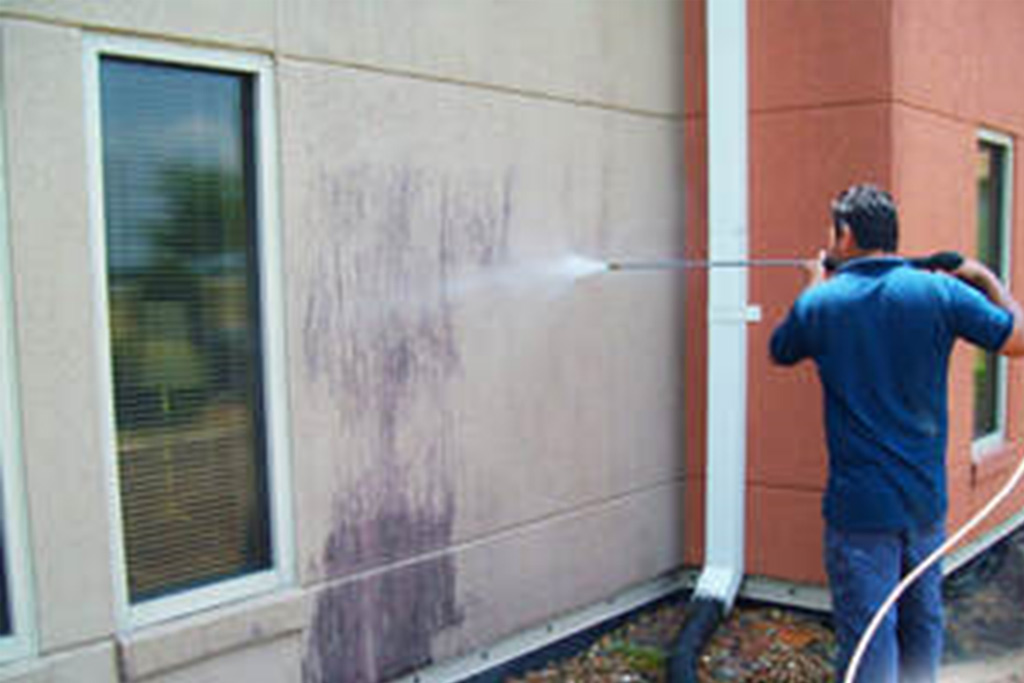
Stucco is a popular exterior finish for homes and buildings due to its durability, unique texture, and classic charm. But that same texture that gives stucco its character also makes it a magnet for dirt, mold, mildew, and stains. Over time, stucco can start to look dingy or streaked—especially in humid or shady areas. 😬
Power washing can restore stucco to its original beauty—but if done incorrectly, it can crack, chip, or destroy the surface. That’s why it’s crucial to understand how to safely clean stucco and other textured surfaces using the right pressure, tools, and techniques. 🧼💦
🧠 Why Stucco Requires a Gentle Touch
Unlike smoother surfaces like vinyl siding or concrete, stucco is porous and brittle. It’s designed to “breathe” and naturally expand and contract, which makes it vulnerable to high-pressure blasts.
Here’s what makes stucco tricky:
- Porous Texture: Dirt and grime sink into the nooks and crannies
- Cracks and Hairlines: Older stucco can develop fine cracks that widen under pressure
- Soft Finish: It chips easily under direct high-pressure water
This means that while power washing is a great way to clean stucco, you need to do it with care. 💡
🧽 Benefits of Cleaning Stucco with Power Washing
When done properly, power washing offers big benefits for stucco homes:
✅ Restores the surface’s color and brightness
✅ Removes mold, mildew, and algae
✅ Prepares the surface for painting or sealing
✅ Increases curb appeal and resale value 🏡
✅ Prevents long-term decay and staining
Whether you’re doing seasonal maintenance or preparing for a paint job, a gentle power wash is the best way to revive old stucco safely.
🛠️ Tools & Materials You’ll Need
Before you begin, gather the right tools:
- A pressure washer with adjustable PSI
- A low-pressure tip (40° nozzle is ideal)
- A soft-bristle brush or extension wand
- Stucco-safe detergent or cleaner
- Garden hose for rinsing
- Safety goggles and gloves 🧤
Optional but helpful:
- Bleach or mold cleaner (for stubborn mildew)
- Drop cloths or tarps to protect landscaping
Browse Amazon Here For Top Rated Power Washers And Accessories
⚙️ Step-by-Step: How to Power Wash Stucco Safely
✅ Step 1: Inspect and Repair First
Before washing, walk around the building and look for:
- Cracks or damaged areas in the stucco
- Loose paint or flakes
- Signs of water damage
Patch any cracks with stucco repair compound and allow to dry at least a few days before power washing. You don’t want water getting inside your walls! 🧱💦
✅ Step 2: Choose Low Pressure
Set your pressure washer to 1,500 PSI or lower. Stucco does not require high pressure to clean—and using too much can gouge or blast off chunks of the finish.
Use a 40° white nozzle for a wide, gentle spray pattern.
✅ Step 3: Apply Detergent
Use a cleaning solution that’s designed for delicate exteriors or stucco. Apply the detergent with a soft wash method or low-pressure soap tip. Let it soak for 5–10 minutes, but don’t let it dry.
If you see mold or mildew, add a mild bleach solution (1:3 bleach-to-water ratio) to the mix—but be cautious around plants and windows.
✅ Step 4: Gently Scrub (If Needed)
For heavily stained areas, use a soft-bristle brush on an extension pole to agitate the surface by hand. This is especially useful around windows, rooflines, and vents where buildup accumulates.
✅ Step 5: Rinse Thoroughly
Switch to a rinse nozzle (again, 40° tip) and gently spray the surface from a safe distance—about 3 to 4 feet away. Work from top to bottom, in overlapping horizontal passes.
Do not hold the nozzle too close or aim directly into cracks or edges. Be patient—the goal is gentle cleaning, not blasting. 🚫💣
🌿 Protecting Landscaping and Surroundings
Stucco walls are often surrounded by flower beds, grass, or shrubs. When using detergent, protect landscaping by:
- Wetting plants with clean water first
- Covering them with plastic sheeting if using bleach
- Rinsing plants again after cleaning
This will prevent chemical damage and keep your garden healthy. 🌼💧
🧼 How Often Should You Clean Stucco?
It depends on your environment, but a good rule of thumb is:
- Once a year in humid or shaded areas
- Every 2 years in dry or sunny climates
- Before repainting or sealing
If you live near the ocean, in an industrial area, or surrounded by trees, you may need to clean more frequently.
🧰 When to Call a Professional
If your stucco is:
- Cracking or crumbling
- Covered in mold or algae
- Several stories high
- Older and delicate
…consider hiring a professional. Pros use soft wash systems, scaffolding, and specialty cleaners to get the job done without damage.
🏁 Final Thoughts
Stucco exteriors are beautiful—but they need a little TLC to stay that way. With the right equipment, detergent, and approach, you can safely remove dirt, mold, and grime without harming the surface.
Power washing doesn’t have to be aggressive to be effective—especially with stucco. Keep it gentle, consistent, and smart, and your textured surfaces will look fresh and last for years. 🧱✨💦
Browse Amazon Here For Top Rated Power Washers And Accessories



